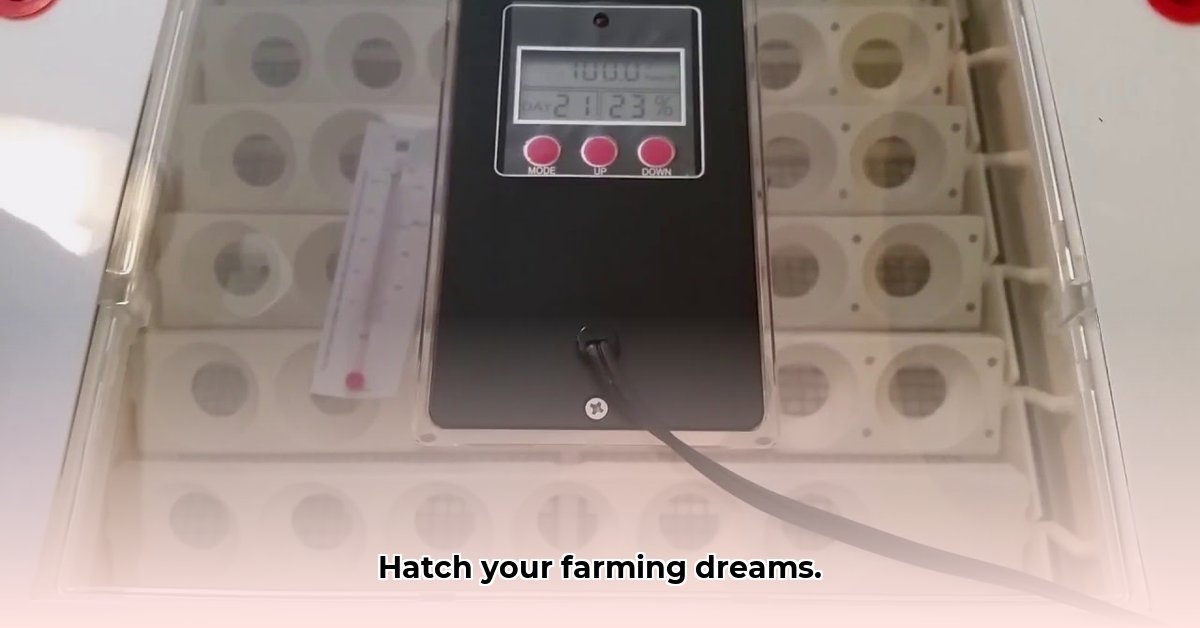
Incubators at Tractor Supply: Your Path to Successful Hatching
Ready to embark on the rewarding journey of hatching your own eggs? Tractor Supply offers a variety of incubators, from compact home units to larger models ideal for small farms. Before you begin, let's explore the key steps to a successful hatching process. This guide will walk you through choosing the right incubator, setting it up properly, and maintaining optimal conditions for healthy chicks. For additional brooding resources, check out helpful resources.
Choosing Your Perfect Hatching Partner
Selecting the right incubator is crucial. Consider the number of eggs you intend to hatch (are you a hobbyist or small-scale farmer?), and the type of eggs (chicken, duck, etc.). Different incubators accommodate varying egg capacities and sizes. Thoroughly research different models and read user reviews to gain insights into their performance and reliability. What capacity and egg types best suit your needs?
Setting Up Your Incubator: Precision and Detail
After receiving your incubator, follow the manufacturer's instructions carefully. Maintaining the correct temperature and humidity is paramount; this creates the ideal environment for embryonic development. A reliable thermometer and hygrometer are essential for precise monitoring. How will you ensure accurate temperature and humidity control?
Egg Selection: Prioritizing Health and Fertility
Begin with healthy, fertile eggs. Source eggs from a reputable supplier to minimize the risk of disease and maximize your hatching success rate. Handle eggs gently to avoid cracks. Many Tractor Supply incubators offer automatic egg turning, promoting even development. Why is sourcing high-quality eggs so important?
Monitoring and Maintenance: Nurturing New Life
Regularly monitor temperature, humidity, and egg turning. This attentive care is crucial for successful hatching. Maintaining a clean incubator is vital to prevent disease and ensure a healthy hatch. How frequently should you monitor your incubator's parameters?
Biosecurity: Protecting Your Hatch
With multiple eggs, the risk of disease transmission increases. Implement strong biosecurity practices such as disinfection, quarantine, and good hygiene. Neglecting biosecurity can severely impact your hatch rate. How can you minimize biosecurity risks?
Energy Efficiency: Sustainable Hatching Practices
Incubators consume energy; consider energy-efficient models to reduce long-term costs and environmental impact. Choosing a sustainable option reduces your carbon footprint and contributes to responsible farming. What are the energy implications of your incubator choice?
Weighing the Costs: Incubator vs. Purchasing Chicks
Compare the total cost of incubation (including the incubator, electricity, and your time) with the cost of purchasing chicks. This cost-benefit analysis will help you make an informed decision based on your budget and goals. What factors should inform your cost-benefit analysis?
Troubleshooting: Addressing Potential Challenges
Even with careful planning, issues can arise. Low hatch rates might indicate temperature fluctuations or poor egg fertility. Improper egg turning can lead to underdeveloped embryos. Proactive research on common problems and their solutions empowers you to address challenges effectively. What are some common incubation problems and their solutions?
Expanding Your Knowledge: Continuous Learning
Expand your knowledge through online resources, forums, and poultry farming communities. Continuous learning is essential for improving your hatching success rate. Consider workshops or online courses to further enhance your expertise. Where can you find reliable resources and communities for poultry farming?
Weighing the Pros and Cons: A Balanced Perspective
| Advantages of Using Tractor Supply Incubators | Potential Drawbacks |
|---|---|
| Precise control over hatching conditions | Higher initial investment |
| Potential for better hatching rates | Increased risk of disease; biosecurity is crucial |
| Highly rewarding and educational experience | Requires dedicated monitoring and maintenance |
| Boosts self-sufficiency | Energy consumption; consider long-term costs |
| Wide variety of models available | Potential for equipment malfunctions; have a backup plan |
Remember, successful hatching requires careful planning and diligent attention. By following these steps, you'll greatly increase your chances of hatching success with your Tractor Supply incubator!